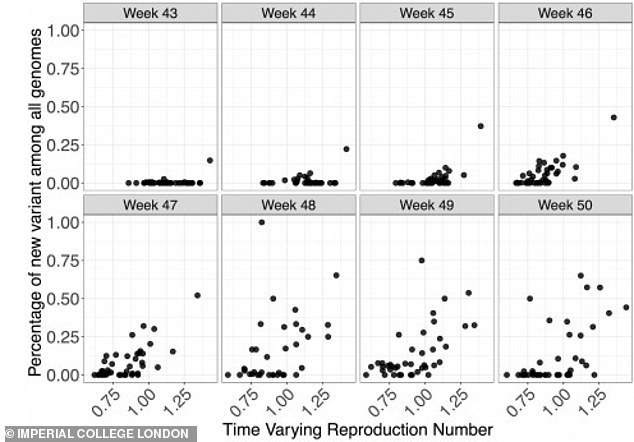New mutant coronavirus strain IS more contagious by nearly 50%
The new mutant variant of ‘super’ coronavirus is indeed more infectious than previous variants, just as scientists feared, a new study finds.
Imperial College London researchers found that the new variant that’s been wreaking havoc in the UK and arrived in the UK may be nearly 50 percent more transmissible, based on samples taken from nearly 86,000 Britons.
That may not sound like much more, but each infected person leads currently leads to 1.15 more infections in the US, according to daily calculations from RT.live.
With more than 186,000 people newly infected in a single day on average in the US, the 48 percent higher transmissibility rate of 1.85 could drive new infections per day beyond 275,000.
It could spell disaster for hospitals in hotspots like California where some health care systems and regions are already out of ICU beds, in states of ‘internal disaster’ and rationing care.
In a study pre-print posted yesterday which has not yet been peer-reviewed, but they determined that the ‘R’ number for the new B117 variant is between 0.4 and 0.7 points higher than other variants.
And it appears to spread more commonly and quickly among people in their 20s.
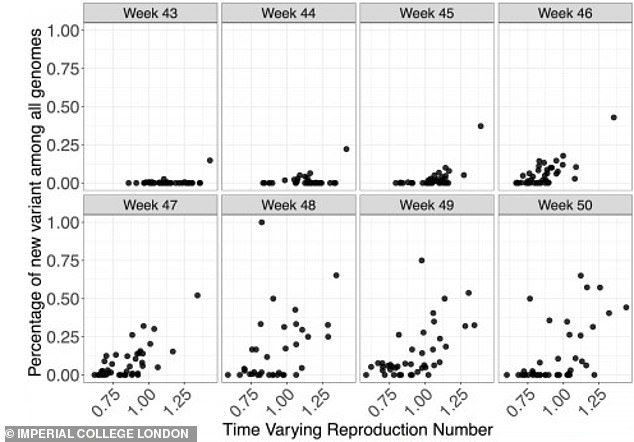
Graphs from the new study show how, over eight weeks, the new variant became increasingly common (dots higher on each chart) in the UK and became more transmissible (dots further the right on each chart show rising R numbers, or transmission rates
The ‘R’ number of a virus describes the average number of additional cases that each infection leads to.
By this measure of transmissibility the R number in the US ranges from about 0.86 in Alaska to 1.23 in Maine, which has emerged as a hotspot this week.
In the UK, the R number is estimated to be between 1.1 and 1.3.
The new variant was first detected there in September, but beginning last month, it has exploded and driven aa surge in infections among Britons.
Imperial College London researchers sequenced the genomes of 1,904 people infected with the new variant and compared how quickly the virus spread to a broader sample of other specimens taken from more than 48,000 people in England.
As they expected, they found that the new virus did indeed have a ‘selective advantage over circulating SARS-CoV-2 variants in England,’ they wrote in the print posted online on Thursday.
The variant was also disproportionately common among people in their 20s, and those living in South East and East England and London.
The findings of the new study mean each person who catches this mutated virus will pass it on to up to 0.7 more people on average.
So far, there isn’t evidence to suggest the new variant causes any more serious illness or is more fatal.
Encouragingly, virologists and public health experts believe that vaccines made by companies like AstraZeneca, Pfizer and Moderna will still be effective against the new variant of coronavirus.
But the new variant heats up the race between the spread of the virus and vaccination campaigns in the UK, the US – where the new variant has now been found in Colorado, California and Florida – and at least 31 other countries where the more infectious form of coronavirus has been detected.
The US vaccination program, so far, is a disaster.
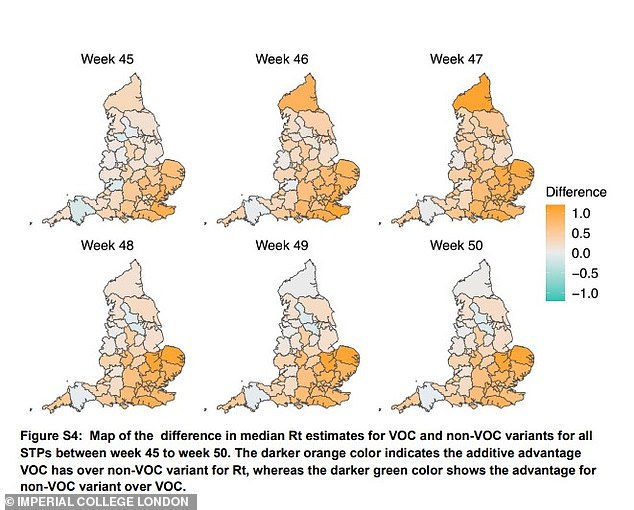
Over the course of six weeks, the researchers saw how the new coronavirus variant’s transmission rate (R) became
higher (orange) than those of other variants, especially in South East England, East England and London
Only 3.17 million Americans had been vaccinated as of Friday, according to a Bloomberg News tally.
The CDC’s tally puts the number even lower. The agency’s site says its vaccination tracker will be updated every Monday, Wednesday and Friday, but at the time of publication, the tool showed Wednesday’s numbers, with 2.79 million people vaccinated.
Bloomberg’s higher estimate means Operation Warp Speed has vaccinated just 16 percent of the 20 million Americans it promised to inoculate by the end of the year.
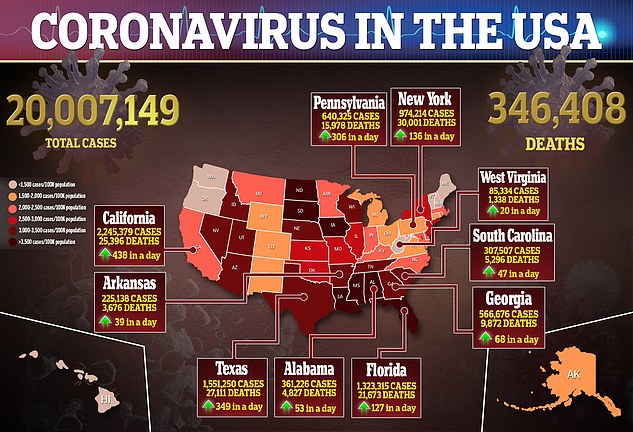
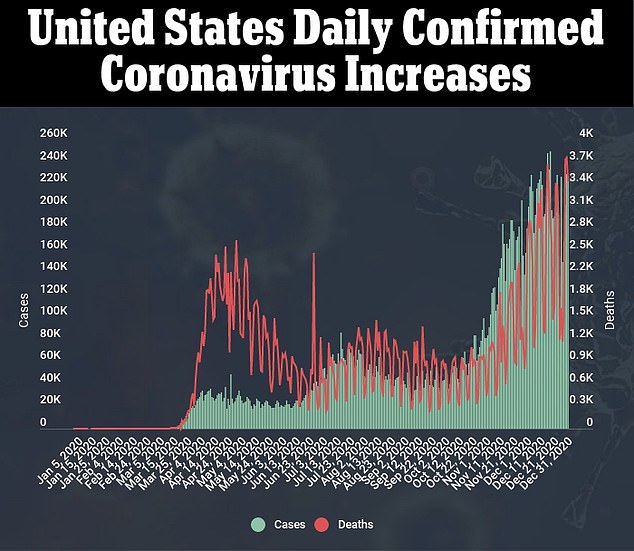
At this pace, it would take nearly a decade to vaccinate all adult members of America’s population of 331 million people.
And many Americans remain on the fence about getting a vaccine even when one is available. Some 60 percent of nursing home workers in Ohio said they would refuse a shot.
Sluggish, dysfunctional vaccine distribution and Americans’ distrust of of the shots could jointly offer the B117 variant just the opening it needs to spread like wildfire through the country infecting millions beyond the 20 million people who have already had the infection in the US, and killing thousands.

